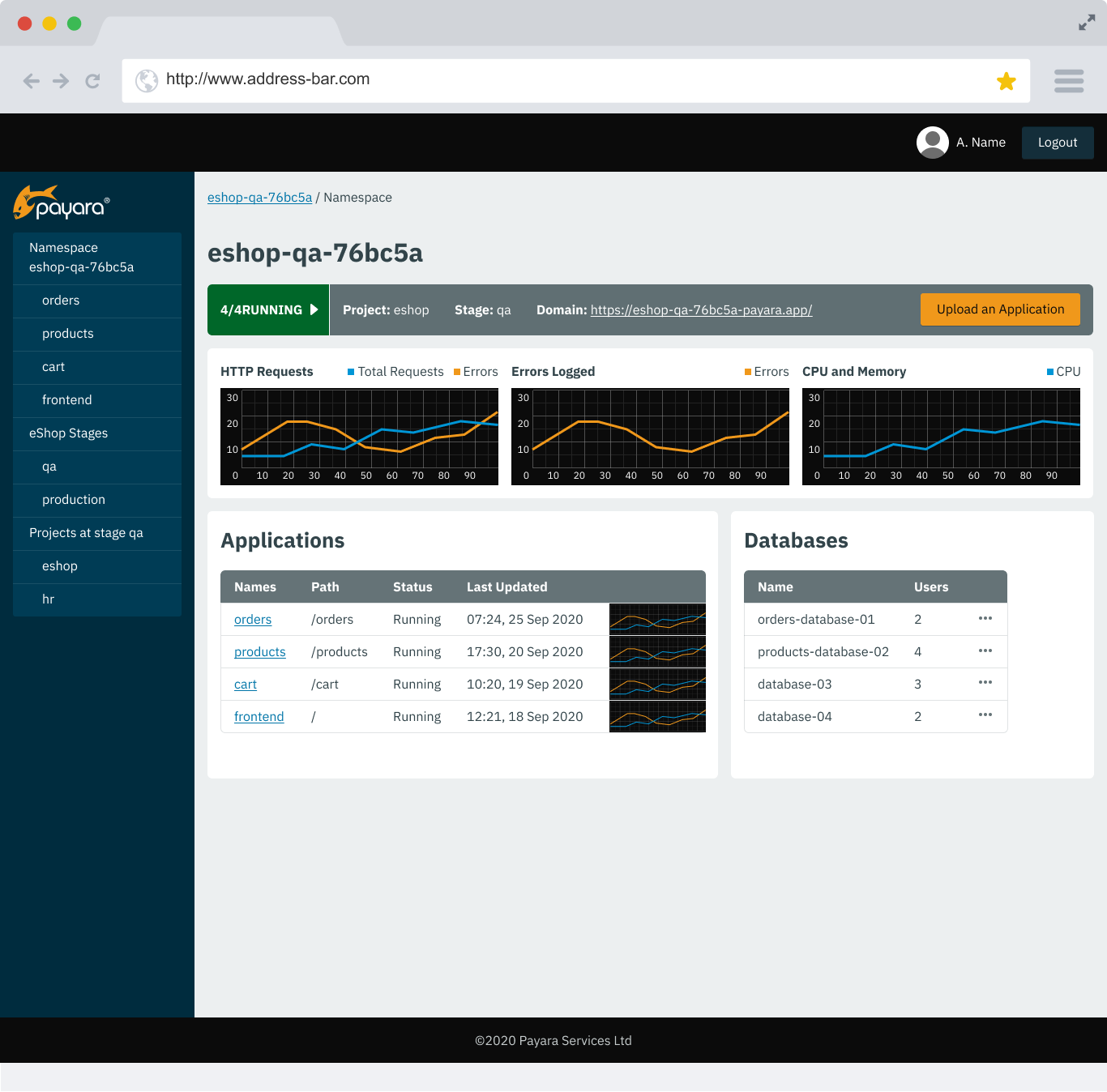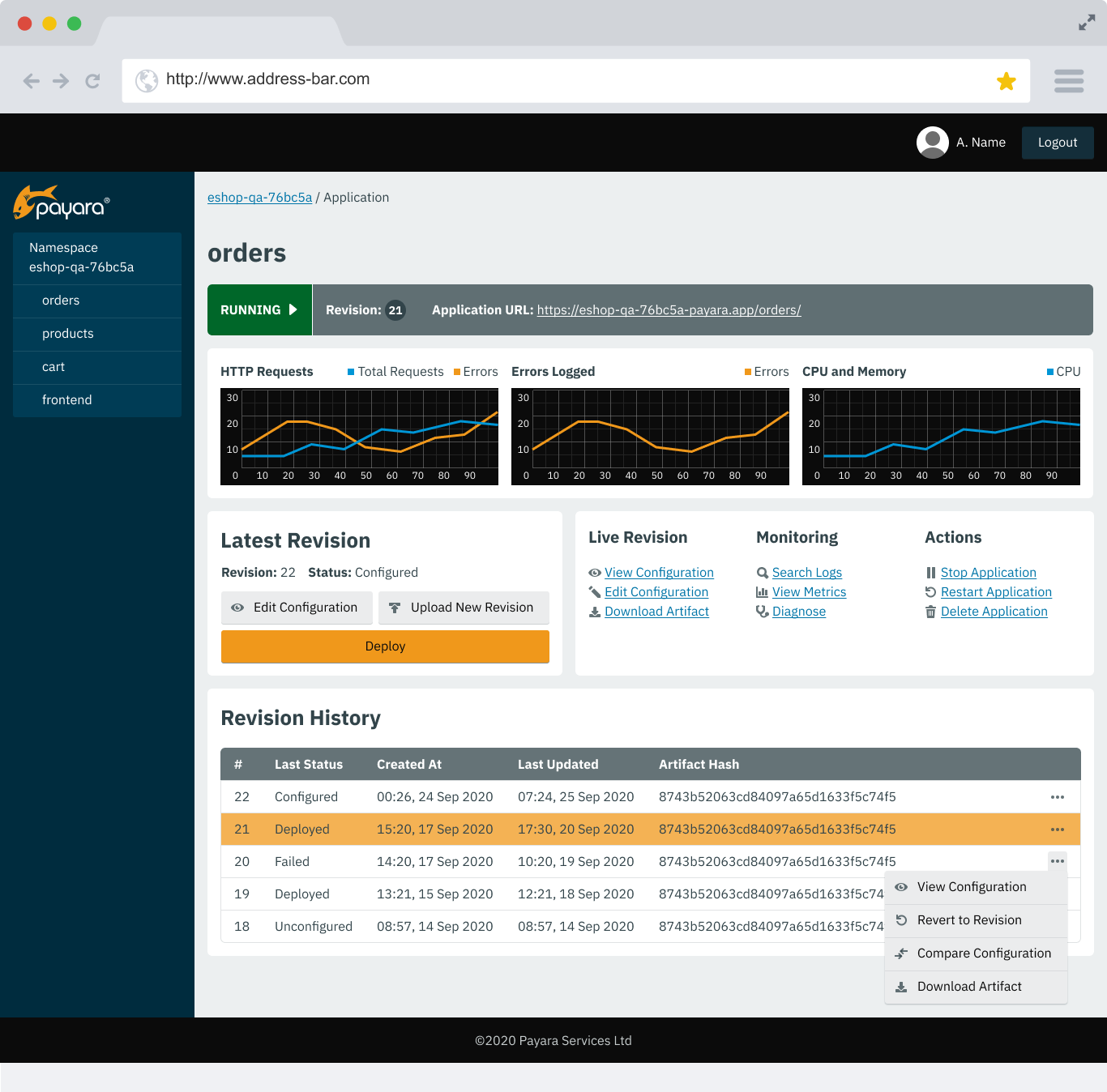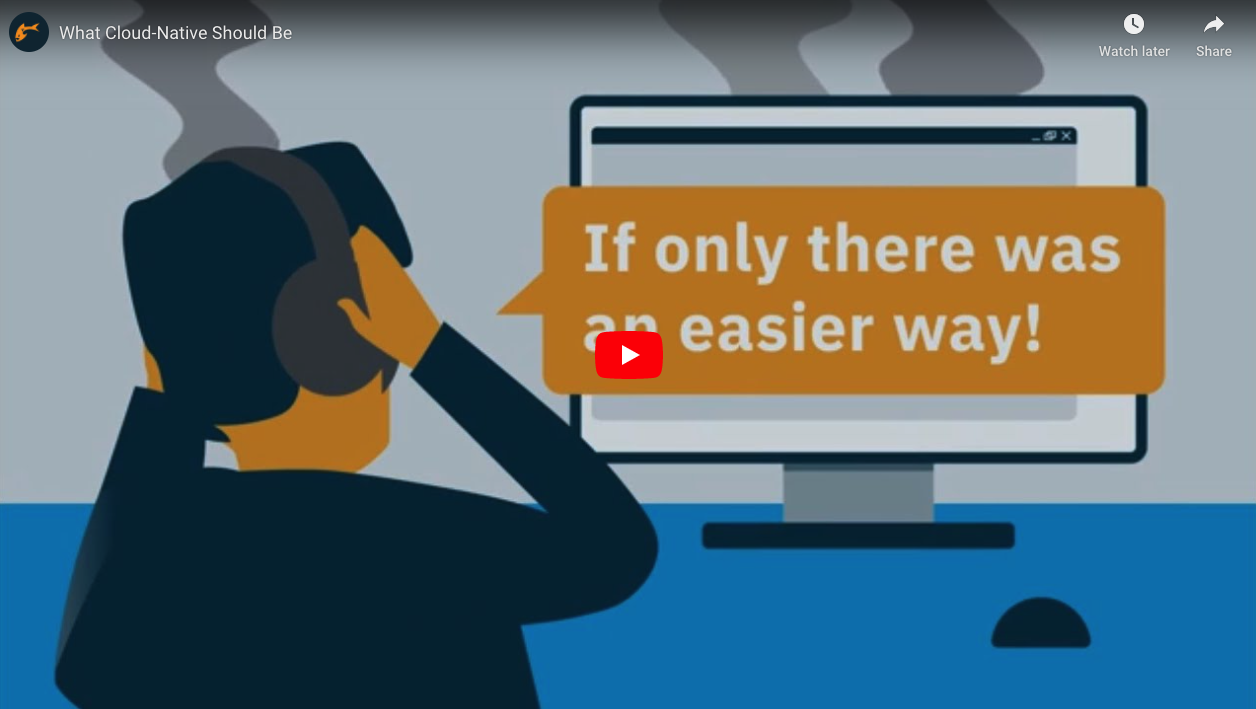Payara Cloud: Click Deploy and Watch Your Apps Run on the Cloud
Originally published on 04 Nov 2020
Last updated on 23 Jan 2025
 by Debbie Hoffman
by Debbie Hoffman
Running your applications on the cloud takes quite a bit of effort. Even “cloud-native” applications present challenges when packaging them to run on the cloud!
What if you could focus on writing code for your business applications and not worry about making it work on Kubernetes or configuring everything to run them on the cloud? What if configuration and deployment were as simple as selecting your War file and clicking deploy? Imagine how much faster you could write code and deliver applications!
That’s what Payara Cloud will do for you. Payara Cloud is what cloud-native should be.
What is Payara Cloud?
Payara Cloud is the next generation of cloud-native application server, which builds on the benefits of the standards-based Jakarta EE model. Payara Cloud separates the development of your application, the packaging of your application, and the infrastructure you run your application on, so you can concentrate on what you do best: writing code.
Payara Cloud handles all the tasks that usually keep you from developing more code, including: provisioning your Jakarta EE runtime, TLS and SSL certificates, communicating with Kubernetes, and your data sources. At the click of a button, Payara Cloud deploys your application to the cloud, creates an application inventory, and monitoring dashboard.
Running your apps on the cloud with Payara Cloud is as simple as selecting your war and clicking deploy.
Click here to watch a 1 minute Payara Cloud introductory video to see how it will make your life easier - and sign up to get first in line to try Payara Cloud when it's released in Beta:
All the Benefits of the Cloud without the Headaches
Using Payara Cloud, you don’t have to worry about learning new skills or figuring out how to use Kubernetes to benefit from it. You’ll receive a Jakarta EE compliant managed runtime that runs on Kubernetes.
So when you’re ready to deploy your applications to the cloud, you don’t need to learn new languages or re-write your applications for Quarkus or Spring. You won’t even need to re-write your Jakarta EE applications to use Payara Cloud, either.
With Payara Cloud, you leverage the skills you’ve already developed over the years to migrate existing applications to cloud-native architecture and experience all of the benefits of running your applications on a cloud computing delivery model: scalability, elasticity (infrastructure on demand), and a convenient, single bill that covers your Kubernetes, cloud, and Payara Cloud usage.
Here's a Sneak Peek of Payara Cloud
Our developers are currently putting the finishing touches on this next generation of cloud-native application server: Payara Cloud (Beta). Before the official launch, we'll offer a live, interactive demonstration, so you can watch Payara Cloud in action and have an opportunity to sign up to use Payara Cloud Beta and let us know what you think and suggest new functionality and features.
Until then - let's take a quick look at what you might see in the main user interface of Payara Cloud. In the following mockup (these screenshots are for demonstration use only and not representative of the final product), you're looking at the Application Inventory view in Payara Cloud. A single namespace can have multiple applications and projects. As shown in the screen shot, there are four applications running in the eshop-qa-76bc5a project, which happens to be in the testing stage. Each of their statuses can be seen from this view. You can also see in this example that there is another project within the namespace called "hr", and four connected databases.
Having all of the applications and databases in the same namespace allows them to communicate with one another more easily.
 From this Application Inventory view, you can also see a series of general metrics that apply for the entire namespace.
From this Application Inventory view, you can also see a series of general metrics that apply for the entire namespace.
Eventually, Payara Cloud will offer the option to take everything in your Test namespace and move it over to your Production project - with just a click of a button.
From the Application Inventory, if you were to click on the name of any of your applications, you would then access the Application Detail view, shown in the following screenshot of the "Orders" Application Detail View:
 The monitoring metrics displayed in the Application Detail View are specific to that application. Once fully developed, you'll be able to use MicroProfile APIs to define exactly which metrics you would like to monitor along with the Payara Cloud-provided metrics, search logs, and even diagnose problems in your application.
The monitoring metrics displayed in the Application Detail View are specific to that application. Once fully developed, you'll be able to use MicroProfile APIs to define exactly which metrics you would like to monitor along with the Payara Cloud-provided metrics, search logs, and even diagnose problems in your application.
You can review a complete revision history of the application for each time the application was uploaded or configured. If you should upload a new version of your application and find it doesn't work after it's uploaded - you can very easily click Revert to Revision and go back to your last working version.
Another useful feature of the Application Detail View is the Download Artifact option. If you have multiple versions of your application on your machine, you don't want to risk making updates to the wrong one! Download the current version directly from your Application Detail View in Payara Cloud and you'll know without a doubt you're working with the right version.
Excited?! We are too. Register your interest in Payara Cloud here and we'll let you know when the interactive demo is scheduled so you can see the product in action.
Related Posts
The Payara Monthly Catch - August 2025
Published on 02 Sep 2025
by Dominika Tasarz
0 Comments
How to Build Cost-Effective Cloud Architectures
Published on 19 Aug 2025
by Chiara Civardi
0 Comments
Cloud adoption has transformed how developers build and scale applications, but it also brings new challenges in controlling costs. As cloud bills grow alongside usage, designing cost-efficient cloud architectures becomes essential for ...



